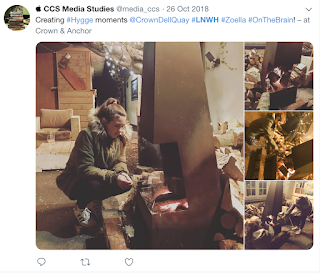The zoella apartment video
How (and why!) have stereotypes in this media product been used both positively and negatively? mistakes left in the video: positive as it creates authenticity, makes her seem more down to earth and real. negative as it makes her seem lazy, unprofessional and clueless (stereotype often linked in with women). fairy lights in her website: stereotypically girly but is positive as it appeals to her target audience of young girls. can be viewed as basic- negative stereotype as there's nothing special or authentic about her. Zoella is conforming to hegemonic standards Zoella's target audience is precise and specific. The zoella apartment video How are women constructed in this video? over enthusiastic and happy- always smiling- it looks fake. man in the video is included in the video for the female gaze, to be looked at and admired by heterosexual women. video is made for people who watch her other videos (existing fans would understand inside jokes and k...

